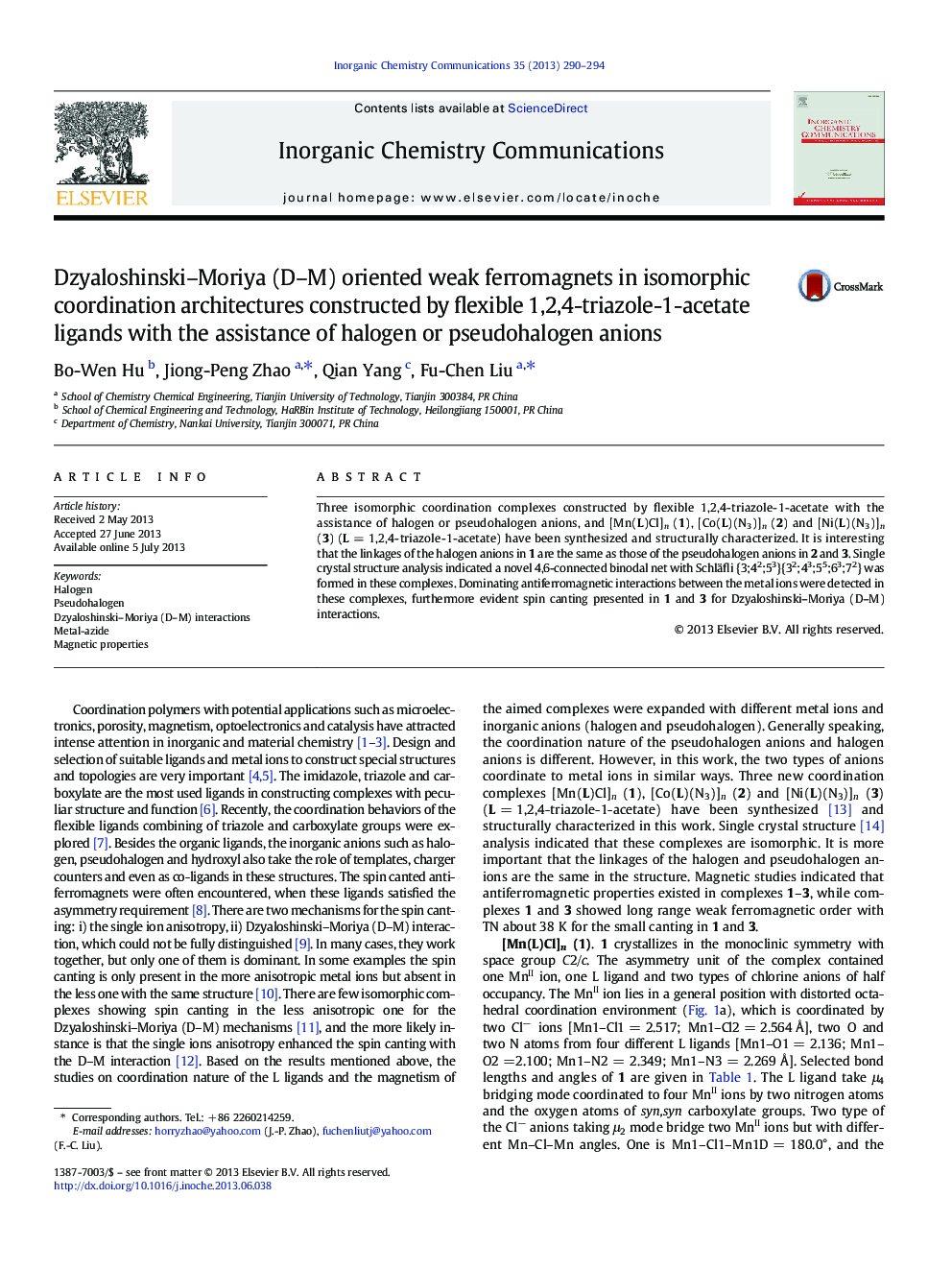| Article ID | Journal | Published Year | Pages | File Type |
|---|---|---|---|---|
| 1303879 | Inorganic Chemistry Communications | 2013 | 5 Pages |
•Three isomorphic complexes was constructed with halogen or pseudohalogen anions.•The halogen anions in 1 could be substituted by the pseudohalogen anions in 2 and 3.•Evident spin canting presented in Mn(II) and Ni(II) complexes for (D–M) interactions.
Three isomorphic coordination complexes constructed by flexible 1,2,4-triazole-1-acetate with the assistance of halogen or pseudohalogen anions, and [Mn(L)Cl]n (1), [Co(L)(N3)]n (2) and [Ni(L)(N3)]n (3) (L = 1,2,4-triazole-1-acetate) have been synthesized and structurally characterized. It is interesting that the linkages of the halogen anions in 1 are the same as those of the pseudohalogen anions in 2 and 3. Single crystal structure analysis indicated a novel 4,6-connected binodal net with Schläfli {3;42;53}{32;43;55;63;72} was formed in these complexes. Dominating antiferromagnetic interactions between the metal ions were detected in these complexes, furthermore evident spin canting presented in 1 and 3 for Dzyaloshinski–Moriya (D–M) interactions.
Graphical abstractThree new coordination complexes with triazole heterocyclic ligand bearing acetic acid group have been synthesized and structurally characterized. The chloride anions in 1 are replaced by azido anions in 2 and 3 and the three complexes show novel 4,6-connected binodal net. Complexes 1 and 3 are canted antiferromagnets oriented from Dzyaloshinski–Moriya (D–M) interaction.Figure optionsDownload full-size imageDownload as PowerPoint slide
